Today, I want to tie up some loose ends.
I knew well in advance of our move that I wanted to write A Year in Oaxaca, both because it would provide a creative outlet during a time of great personal upheaval and uncertainty, and because it would allow me to chronicle a period of time I felt would go by very quickly, and would be so eventful the details might simply get lost in my memory. Our time in Oaxaca, as anticipated, has been rushing by.
Before I even started this newsletter I knew I wanted to post at least twice-weekly, and my goal is, and was, to make reading my work a pleasant experience. But because of this format, and because some entries are paywalled, it felt important that my writing take the form of what are basically vignettes. My entries, while they are more-or-less sequential and form a larger narrative, are basically independent from each other, both because of technical constraints (I’m limited to 1000 words before my email sends are automatically truncated) and because I think this format makes it easier to drop in at any point without feeling like you’ve missed huge plot points.
The problem, though, is that some stories are easily encapsulated in a single post and some decidedly are not. This week’s paid post about the Cantera quarry I visited with our friend Ehren is a good example of a contained story with a beginning and an end, even if it has ignited a desire in me to take lessons on how to carve large hunks of rock into smaller hunks of rock (we’ll see what happens with that). Others, such our having to use the gestor, Señor Placas, to register our car, represent only a small part of an ongoing saga.
Today I am updating you about a variety of tales, large and small, which have been left open-ended.
Have a question or a thought? Let me know!
Hormigas
Our guerra with the hormigas is daily and happening on all fronts. They’re in the garden carving away at our flowers, plants, and trees. They’re living in the roof of our house and descending both day and night. They enter our compound from an abandoned parcel of land next to us, from the property of the neighbor, Marcus, who lives just above us on the hill, and they march in across the driveway. They’re everywhere.
Many of you have sympathized, and I’ve received a number of lovely notes from friends and readers offering to send us ant poison, providing tips for our problem, and commiserating. They’re exactly the kind of comments I appreciate, both because it shows me you care and because I’m very open to suggestions about how to solve this problem. They’re also the types of notes I’d love to see posted beneath my entries, in case the advice you have to offer would also serve other readers here. That entry also resulted in my mother-in-law emailing us to say she has purchased us a can of a very serious looking poison which she’ll be hand delivering when she comes to visit us in a couple of months.
But, even considering the onslaught we’ve waged, the situation with the ants has continued to escalate. When we first moved in I noticed that one of the tall, narrow cacti next to our pool had developed a dark patch in the center. When I pointed it out to Edgar he said it was a type of fungus that I shouldn’t worry about it. But the stain on its sturdy flesh grew worse over time, and one day a couple of weeks ago Edgar messaged me to ask if I could come down to the palapa.
When inspecting the cactus Edgar discovered that our newest ant invaders, the red carpenter ants, had burrowed a hole into the fungus, and when Edgar cut the cactus off at the base he found they had hollowed out the bottom of the plant, essentially turning it into a prefabricated anthill. He said he’d never seen anything like it before, and doused it with bug spray before plugging up the stump with newspaper.
Not too long after I began to notice a mysterious pile of debris on the small concrete shelf immediately next to the pool.
“What is it?”, I asked Edgar. He replied with one word: hormigas.
The ants had burrowed into the concrete wall, displacing a considerable amount of the interior. A day or two later Edgar, who normally just comes to find me when he needs something, messaged me to say, “Puedes venir a la palapa?”
An extremely not-casual number of ants emerged from the hole before our very eyes, and I went to get our shop vac so that we’d have a good place to keep them imprisoned while the poison did it’s job. Edgar filled the hole with transparent silicone as a stopgap and we’ll be patching it with concrete tomorrow.
As for the cactus, Edgar says we can remove the stump and put the remainder of the cactus in its place, where it will root again. This time, hopefully, sin hormigas.
Pisos
One of the first stories I told here was about having our floors replaced upstairs (Part 1 and Part 2). It was a tale of much banging and crashing, of extensive dust, and of builders taking a nap on our floor during their lunch break.
Thanks to the Antonios our floors look lovely. While they’re particularly grey in the photos I’ve taken (very on trend!) they actually have a nice pink undertone, which helps to alleviate the coldness that grey so often offers. It was the first big project completed at our house and paved the way for both the upstairs bathroom renovation (Part 2 of that story coming soon) and for the construction of Andrea’s balcony office.
Tigre
When I first took home Tigre she was a skinny, almost scrawny thing. Her ribs were clearly visible and when it was time for her meals she would leap vertically in the air, unable to contain her excitement. The first time we took her back to Frida’s restaurant, her original rescuer and the foster mom we adopted her from, she climbed on top of one of Frida’s dining tables to get at an already-emptied dinner plate.
Tigre was also extremely sick with severe heart worms, requiring five rounds of expensive treatment doled out by our vet Luciano, a kind, incredibly soft-mannered man with an almost magical ability to calm our dogs. Luciano’s ministrations saved Tigre’s life, and also led to a huge rift with our old vet Marisol who, upon learning Luciano had given Tigre the treatment, fired us in a huff. Considering it was treatment for a major illness she completely failed to diagnose, we think this was for the best.
Now, Tigre is a plush, chunky dog with voluptuous rolls of skin around her neck. Her fur, once so thin and brittle, is downy soft, and so thick that even just ten minutes of pets on the couch makes her grow so overheated that she has to go lie on the tile floor to cool down. She is also very, very lazy, in a way that’s rather lovely to witness. The Tiger has become La Princesa.
Loo
We knew Tigre was lonely, and one day not too long after we’d moved in Edgar came to me and said rather earnestly that he thought we really needed to get another dog so that Tigre wouldn’t be so lonely.
He was undeniably right. Luciano told us he thinks Tigre is five years old, and there’s no way our sweet pudding of a dog survived her whole life on the streets. She was a pet someone abandoned, and as a result whenever we left our house she would whine and bark and basically just stay at the gate until we came home. We felt absolutely awful every time we left the house, and we knew she needed a companion.
Loo was the solution to that, and for a dog that was intended to be another dog’s pet he certainly had a lot of attitude. Loo (short for the indigenous name of our town, Loohvana) was a standoffish dog prone to barking, who peed against the wall of the palapa and was incredibly anxious about other animals entering our property. But, over time, our little, rascally dog has settled in. His considerable hypervigilance has tapered off and his “I don’t need you” attitude has waned. Now it’s very common for me to suddenly feel a bump on the back of my leg which happens when he presses his snout against me, looking for a pet. He also helped Tigre learn and grow, teaching her how to play, helping her chase the cacomistles that descend into our property every night, and basically being her pal.
Placas
Now that we finally have our license plates the major part of our quest to register our car is over. Of course, we will have to do this entire thing again later this year when we have to re-register the car, and we also will need to pay the yearly taxes for the car, and we need to get stickers for our plates. But thanks to the help of Señor Placas at least we can legally drive our car and didn’t need to gift it to someone else, as was seriously suggested to us by our Mexican attorney (who is very good!)
Other than our battle with the hormigas, my post about Señor Placas was the one that got the most significant, vocal response from people. Believe me, I certainly understand that. Only in Mexico and Spain are ‘fixers’ so necessary that it’s an actual profession.
Efectivo
The hunt for efectivo continues. We finally found an ATM we like, and it’s particularly convenient because it’s a drive-up ATM located right next to a gas station I like to use. But, for reasons utterly unclear to me, for the past couple of weeks it has dispensed exclusively 1000 peso bills.
Talking about the utility of different denominations is something I could, and perhaps should, devote an entire post to. In this moment, though, the best way to describe the inconvenience of this to an American is to say that, in Mexico, trying to use a 1000 peso bill is sort of like trying to use a $100 bill in the United States. Yes, it’s legal tender, and businesses are technically required to take it. But when’s the last time you tried to use a $100 bill in the U.S., the favored bill of criminals around the world, and weren’t treated like you were a survivalist dirtbag trying to pay for a candy bar with a bar of gold bullion? It’s the same here with the 1000 peso bill.
Because the 1000 peso bill the only one we keep being dispensed, it’s how we’ve been paying Edgar lately. While he hasn’t expressed any displeasure we know it’s incredibly inconvenient and for the past couple of weeks when we’ve paid him it’s been with a meaningful apology and a bewildered shrug. I’d rather pay him with real money and not with giant denominations that nobody wants, or is able, to break.
Also, sadly, the bank in our village does not, in fact, have any cash in its ATMs. So much for the governmental promise of making banking easier. At least the security guard was having a good time on his phone the last time we visited, protecting a bank with no cash and no employees.

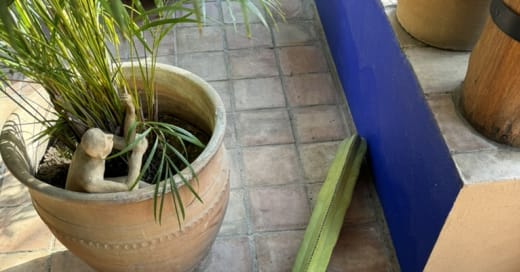


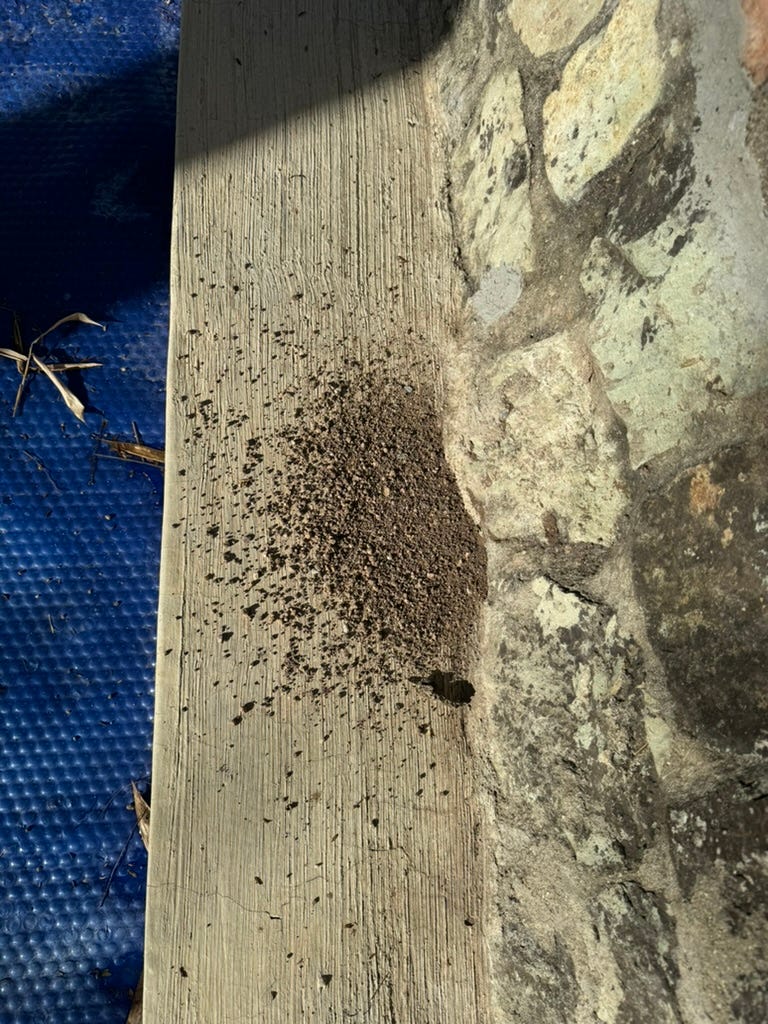

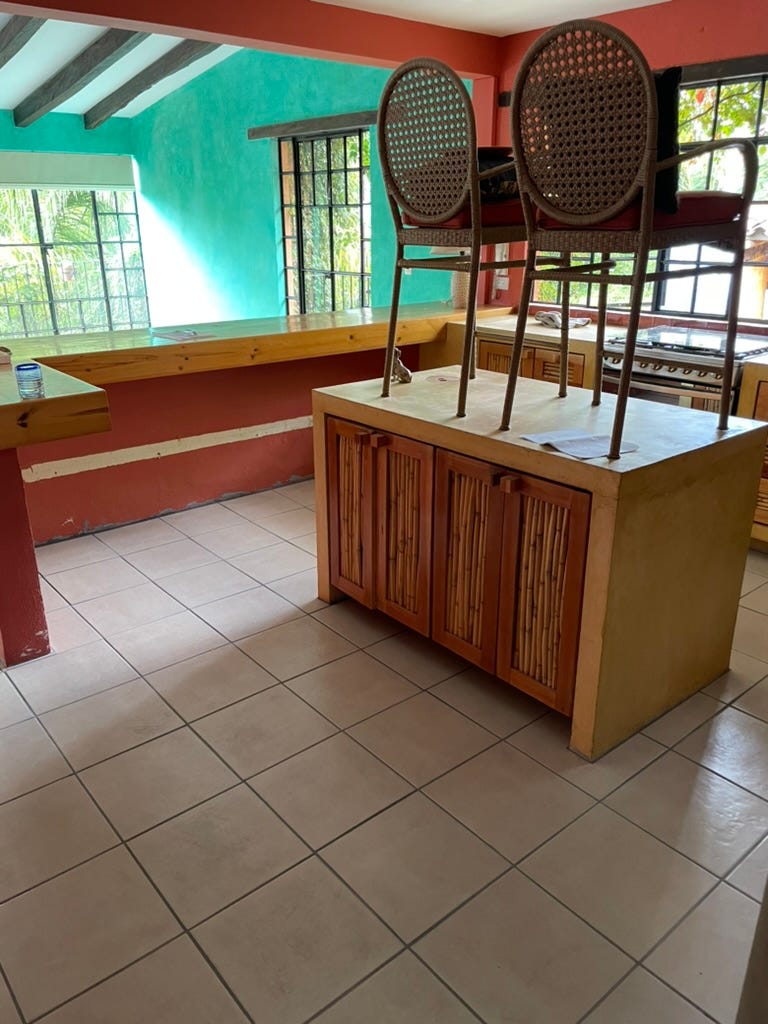

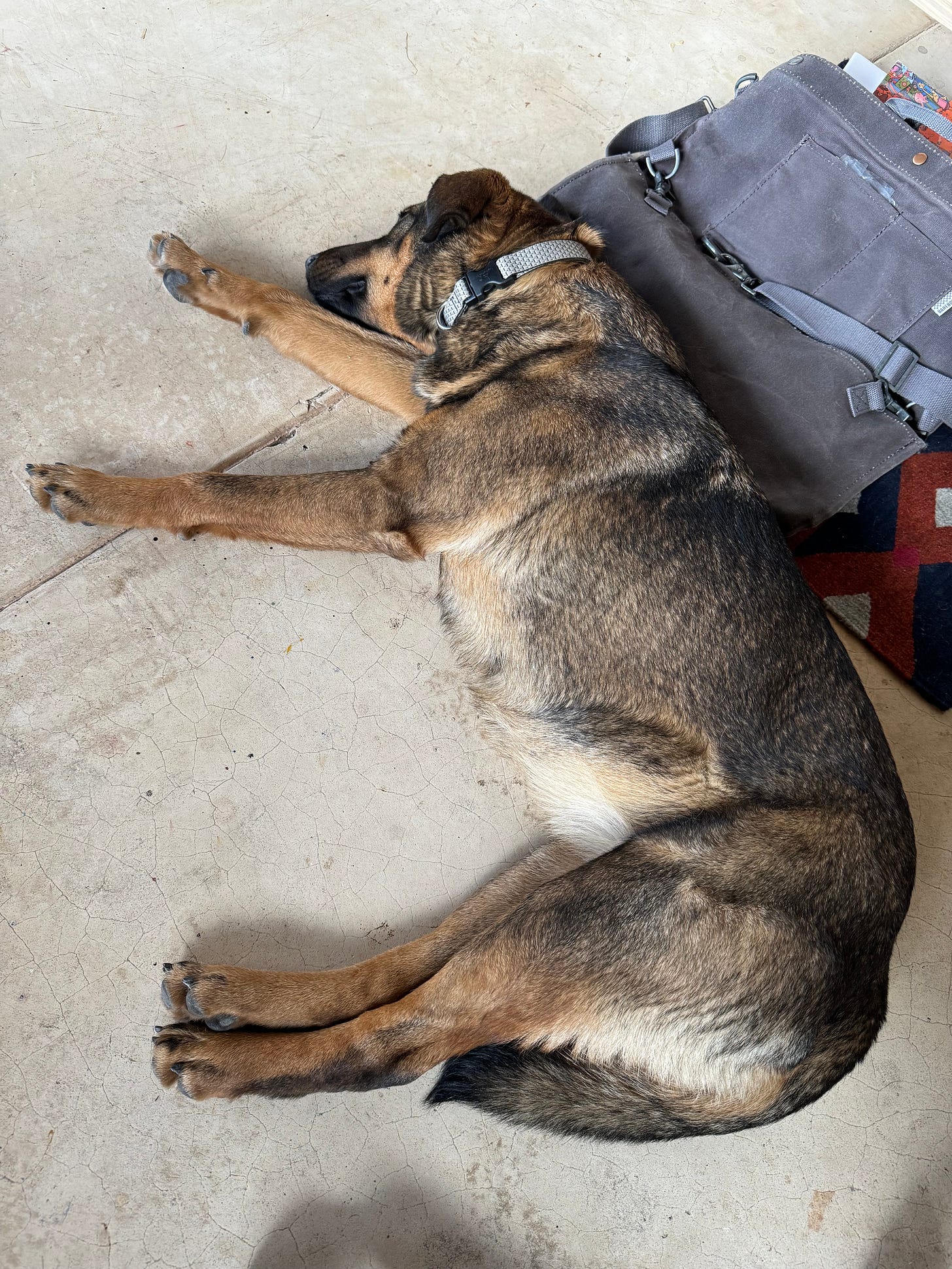

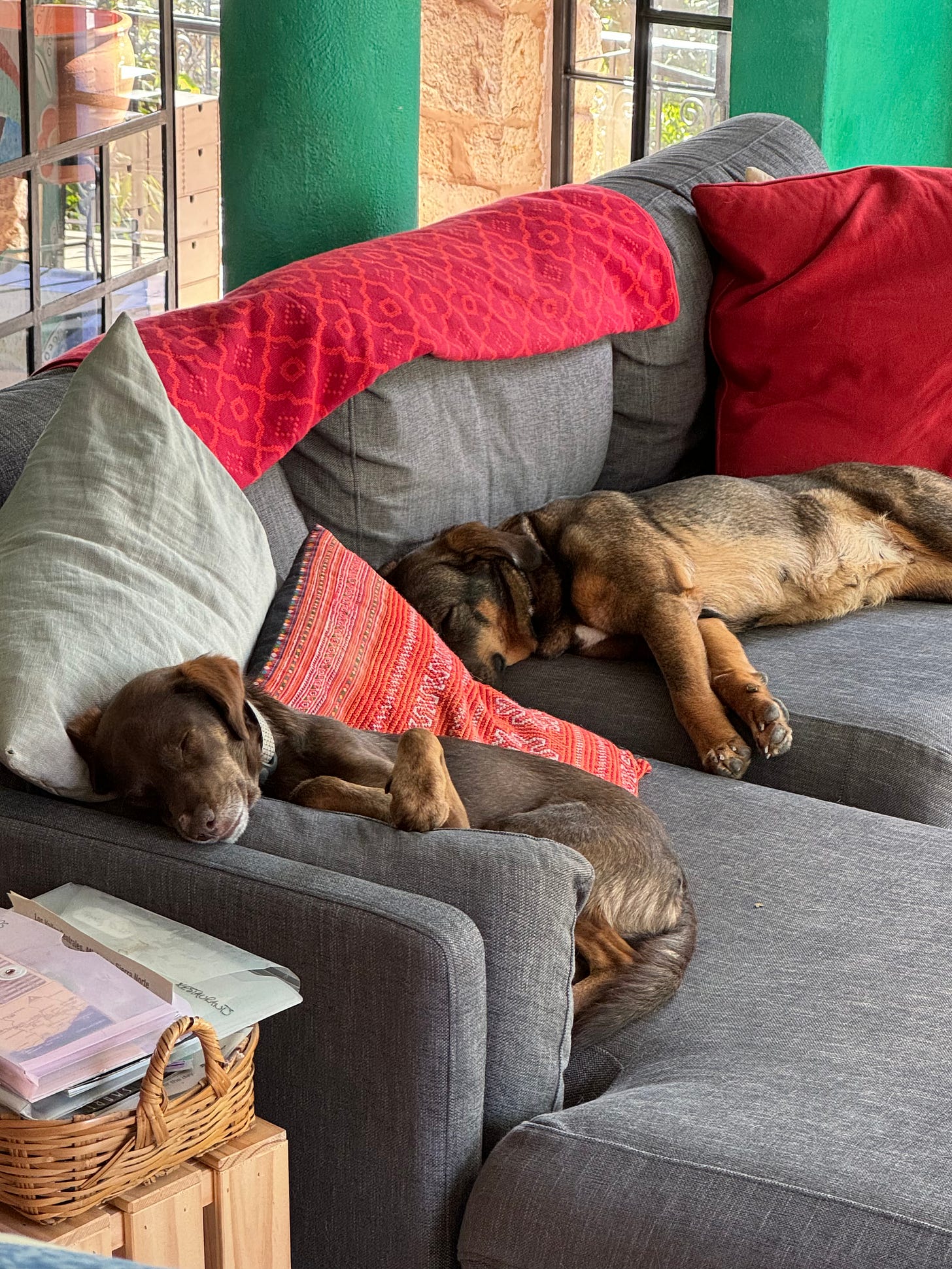
I've heard boric acid gets rid of ants. Never tried it myself though.
Oh, the hormiga problem! In QRoo, MX, we have army ants. Maybe you do too. Our 2nd year living in Puerto Morelos an army of them came into the house and decided to live in our downstairs bathroom. They stayed in the shower; it was very creepy. Our neighbor Roberto said don't disturb them, b/c it will only get worse, in time they'll leave. We had our bookstore at the time, and were open from 6 to 9 evenings. We came home after work one night; Max, our cat looked stressed. In the living room, it looked like our couch was moving. It was the army ants--they were like swarming across the couch over to the door. It was darn creepy!! But they'd left our downstairs bathroom—a plus. The next day we saw them in the yard and there was a giant 2 foot path of them, going who knows where. I couldn't stand it any longer and my husband sprayed them w/ insecticide, to break up the gang. Roberto was right. It was madness! But we'd removed them from inside the house, never to return. Ojala, as the Maya say.